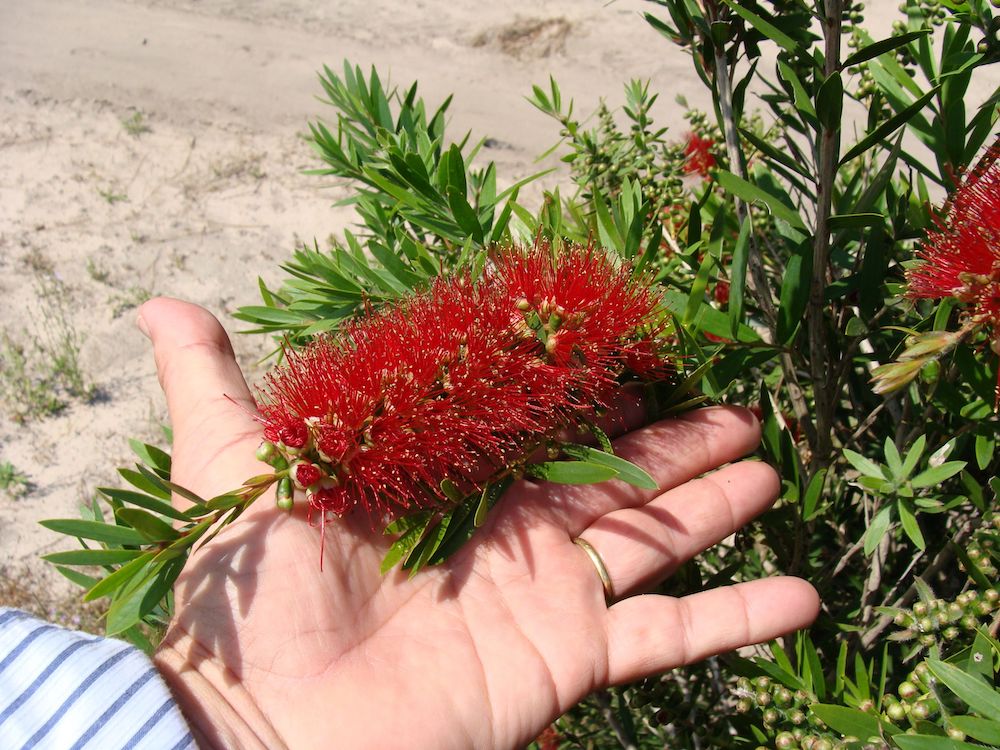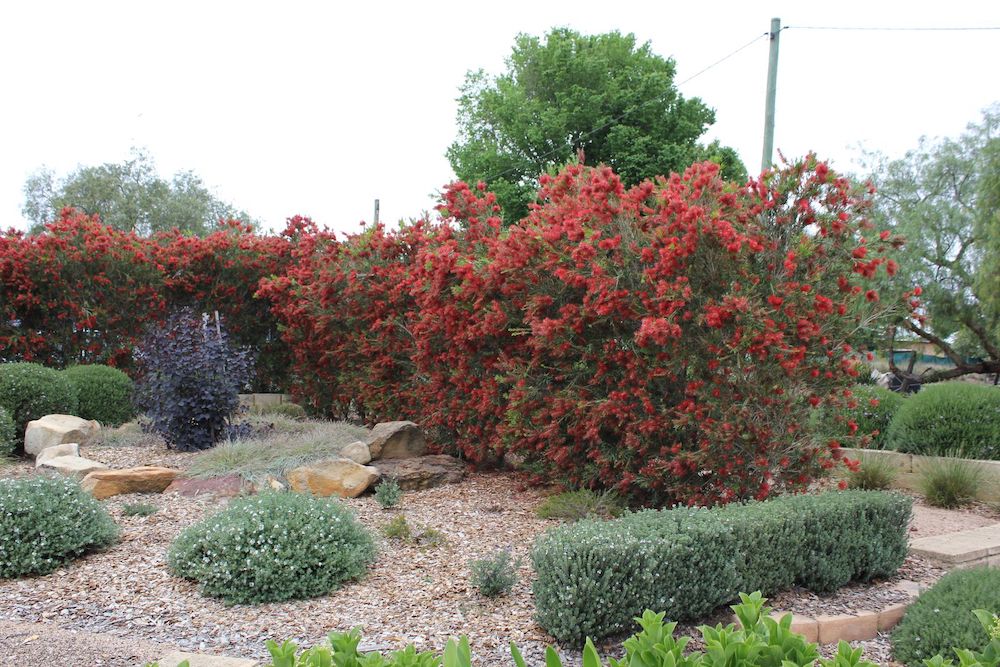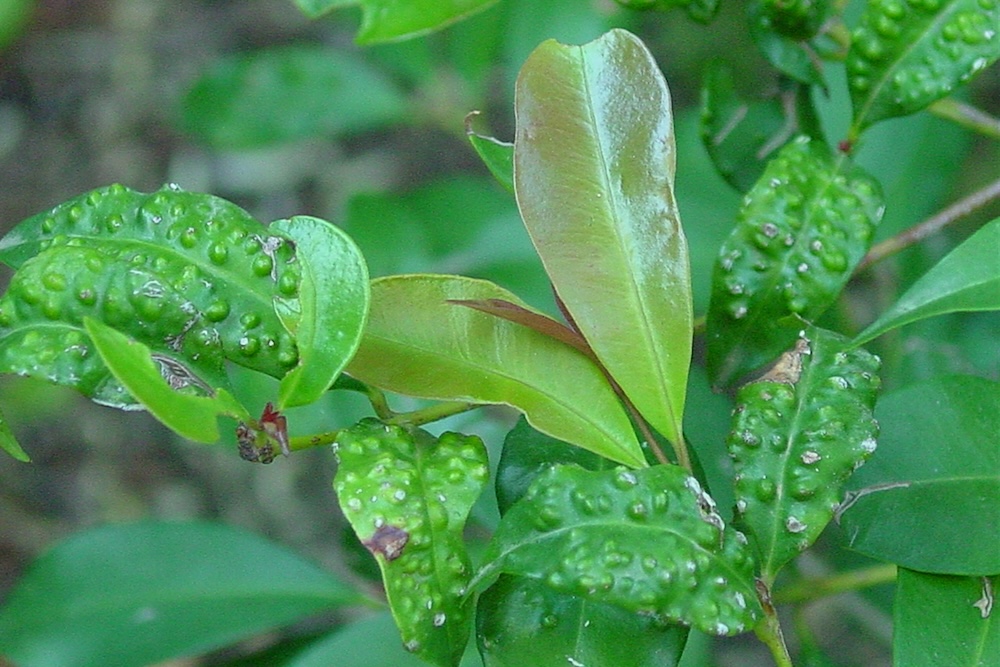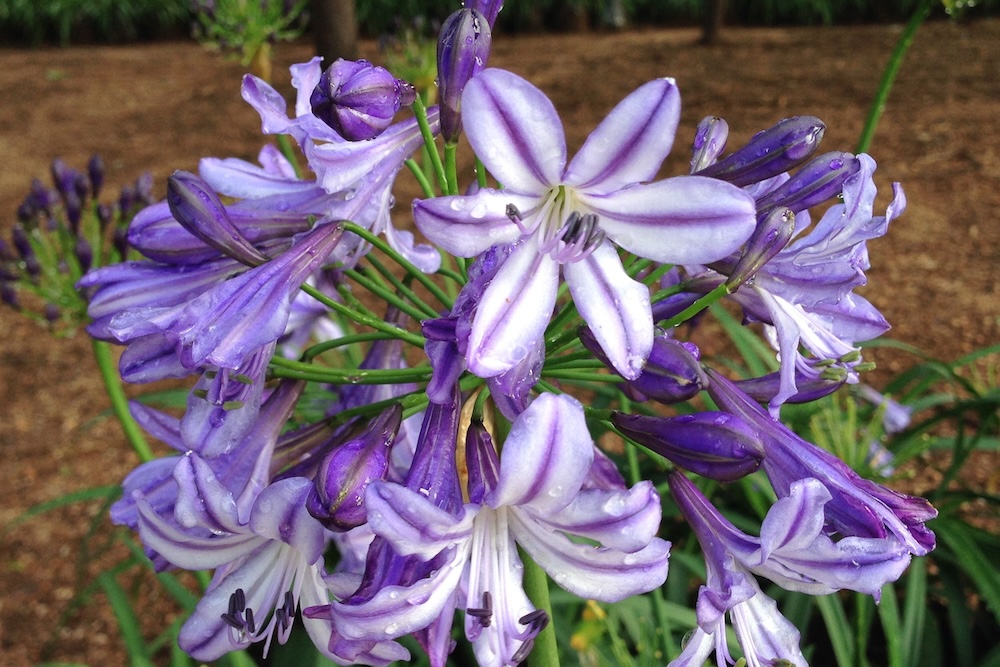Genetic controls are a revolutionary approach that involves using the natural resistance of certain plants to ward off pests.
How to Maintain Callistemons: The Bottle Brush Plant
Callistemons, commonly known as bottlebrush plants, are a robust and striking species native to Australia. These plants are renowned for their vibrant, brush-like flowers and hardy nature, making them a popular choice for both home gardeners and professional landscapers.
There are several species and many cultivars of Callistemons available, each with its unique characteristics. Some are tall and tree-like, while others are more shrub-like. Some have vibrant red flowers, while others bloom in shades of pink, yellow, or white. Choose a variety that suits your garden’s size, style, and colour scheme.
As a member of the Myrtaceae family, they’re related to eucalypts, lilly pillies and melaleucas. Take a look at their fuzzy flowers, and crush a few leaves to smell them and notice the similarities these groups of plants have with each other.
- The Ornamental Appeal of Callistemons: Why They’re a Gardener’s Favourite
- Watering and Fertilisation: The Key to Maintaining Callistemons
- Pruning and Shaping Callistemons: How to Keep Them Looking Their Best
- Shaping Your Callistemon: Tips for Creating Beautiful Hedges and Topiaries
- Common Diseases and Pests
- Pests that Threaten Callistemons
- Conclusion
The Ornamental Appeal of Callistemons: Why They’re a Gardener’s Favourite
Callistemons are favoured for their vibrant, cylindrical flower groups that resemble a bottlebrush, hence the name. Their blooms provide a spectacular display of colour, attracting a variety of birds and insects.
In addition, their hardy nature and low maintenance requirements make them an excellent choice for creating a beautiful, fuss-free garden or landscape.

They can withstand high temperatures and prolonged dry periods, making them a particularly good choice for gardens in hot, dry regions. With that being said, some varieties of Callistemons have demonstrated a remarkable ability to tolerate cooler conditions. Some species can even endure light frost once established.
Remember, though, that sudden, severe frosts can damage young or unestablished plants. So, if you live in a region with harsh winters, consider planting your Callistemons in a protected spot or using frost covers on particularly cold nights.
While Callistemons aren’t overly fussy about soil type, they do have a preference for well-drained conditions. Whether your garden has sandy, loamy, or clay-dominant soil, Callistemons can likely adapt, provided it doesn’t remain waterlogged.
Overly wet conditions can lead to root rot, a potentially fatal disease for these plants. To avoid this, ensure your bottle brushes are planted in areas where water doesn’t pool, and consider raising the planting area or improving soil structure with gypsum and organic matter if drainage is a concern.
When it comes to sunlight, Callistemons are flexible. They can flourish under full sun exposure, which often encourages more abundant blooming. However, they can also tolerate partial shade, particularly in hotter climates where afternoon shade can provide some relief from intense, direct sunlight.
Keep in mind that plants grown in too much shade may not flower as prolifically. So, aim for a balance where your Callistemons receive plenty of light but are protected from the harshest midday sun.
Understanding their specific climate and soil requirements is key to growing healthy, thriving Callistemons. With the right care, these stunning plants can provide a spectacular display year after year, becoming a standout feature in your garden or landscape.
Watering and Fertilisation: The Key to Maintaining Callistemons
Callistemons are drought-tolerant plants, which means they can withstand periods with little water. However, if you’d like your plants to truly thrive rather than survive, it’s a good idea to provide regular watering through the growing season to promote healthy growth and vibrant blooms.
Water deeply once a week, ensuring the soil is thoroughly soaked. In drier climates or during hot weather, you may need to increase this frequency. Conversely, if the soil’s still wet after a week, avoid watering again until it dries a bit.
Despite their tolerance for poor soils, Callistemons will appreciate the addition of compost or slow-release fertiliser in spring and summer to provide them with the nutrients they need to grow healthy and vibrant. Contrary to popular belief, Callistemon species can tolerate normal fertilisers and don’t require a low-phosphorous option like members of the Proteaceae family such as grevilleas and banksias.
Adjust your watering and fertilising schedule according to the seasons. During the growing season (spring and summer), increase watering and apply fertiliser. In the dormant season (autumn and winter), reduce watering frequency and hold off on fertilising.
Pruning and Shaping Callistemons: How to Keep Them Looking Their Best
Pruning bottlebrush plants is an important part of maintaining the health and appearance of these vibrant shrubs. Here are some key points to remember:
- When to Prune: The best time to prune callistemons is after they’ve finished flowering. This is typically in late spring or early summer. Pruning at this time allows the plant to recover before the next blooming season and ensures future blooms aren’t damaged. Avoid pruning during the middle of the day during a heatwave to save your plants from stress.
- How Much to Prune: Callistemons can tolerate heavy pruning if necessary. If your plant is overgrown or hasn’t been flowering well, you can cut it back hard. Remove as much thin, twiggy growth as possible to encourage the development of strong, healthy branches.
- Pruning for Shape: To maintain a particular shape or to create a hedge, you can prune more frequently. Tip pruning encourages bushier growth and can be done at any time of the year. However, for significant reshaping, it’s best to stick to the post-flowering period.
- Maintenance Pruning: Regularly remove any dead or diseased wood to keep the plant healthy. Also, mature callistemons can benefit from the removal of some of the older wood to encourage fresh growth.
Remember to always use sharp, clean tools when pruning to avoid causing unnecessary damage or introducing disease.
Shaping Your Callistemon: Tips for Creating Beautiful Hedges and Topiaries
Callistemons are perfect for creating hedges thanks to their dense growth habit. Start by deciding on your desired shape, then gradually prune over several seasons to achieve this. Remember, it’s better to prune a little at a time rather than all at once to avoid stressing the plant, unless you’re going for a hard rejuvenation prune.
Common Diseases and Pests: How to Protect Your Callistemons
Identifying Common Callistemon Diseases: What to Look Out For
Callistemons are generally disease-resistant. However, they can sometimes be affected by root rot if the soil’s too wet. Signs include wilting leaves and black, rotten roots. To prevent this, ensure your bottle brushes are planted in well-drained soil and avoid overwatering.
Fungal diseases like leaf spot or rust may also occur, especially in humid conditions. These can be identified by spots or patches on leaves. Once you’ve correctly identified a fungal pathogen, prompt treatment with a fungicide and removal of infected leaves can control these diseases.

Pests that Threaten Callistemons: Prevention and Treatment
While Callistemons aren’t often bothered by pests, they can occasionally attract aphids, scale, and mites. Regular inspection of your plants can help catch any infestations early. If pests are found, they can usually be controlled with a horticultural soap or oil spray.
Black sooty mold is a type of fungus that appears as a black, powdery or crusty coating on the leaves and twigs of various plants, including bottle brushes. It gets its name from its soot-like appearance. This mold doesn’t directly harm the plant but grows on the honeydew (a sugary substance) secreted by certain insects such as aphids, scales, and psyllids. It can make affected plants look unsightly and can reduce photosynthesis if the coverage is heavy.
Sooty mold can be washed off with warm soapy water, but the key to long-term control is managing the insects causing the honeydew. Fungicides are not required for controlling sooty mold, because they aren’t feeding on your plant.
Regular care and vigilance are key to keeping your Callistemons healthy. This includes appropriate watering, feeding, pruning, and regular checks for signs of disease or pests. With the right care, your Callistemons will thrive and continue to brighten your garden with their vibrant blooms.
Enjoying Your Callistemons Year-Round
Maintaining Callistemons in your garden is a rewarding endeavour. Their vibrant, brush-like flowers, adaptability to various conditions, and minimal care requirements make them a joy to grow.
With just a bit of effort, you can enjoy their spectacular display year-round. They’re a versatile plant and can fit into various landscape designs. Plant them as standalone specimens, grouped for a dramatic display, or pruned into hedges or topiaries.
Their hardy nature also makes them ideal for coastal gardens, drought-tolerant landscapes, and native gardens. Whether you’re an experienced home gardener or a professional landscape maintenance expert, Callistemons are an absolute joy to maintain.




This Post Has 0 Comments